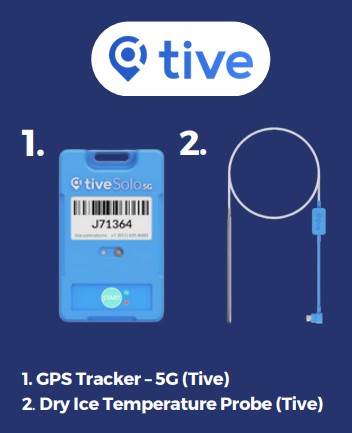Emerging Technologies in Cold Chain Logistics
January 26, 2024
Innovations Reshaping Cold Chain Logistics
Written By: Narek Hakobyan
Cold chain logistics is a crucial element of the supply chain for temperature-sensitive products, especially in the life sciences and healthcare industries. Emerging technologies have transformed how cold chain logistics is managed, making it more efficient and reliable. In this blog post, we will discuss some emerging technologies in cold chain logistics that are particularly relevant for life sciences and healthcare industry.
Tive - 5G GPS and Temperature Probe
 The Tive GPS is a real-time visibility solution for cold chain logistics. It uses the Tive Solo 5G, a tracker that measures temperature, humidity, shock, and light exposure of shipments. The tracker can be paired with a probe that monitors the internal temperature of dry ice or cryogenic shipments. The tracker and the probe send real-time data and alerts to the Tive cloud that provides a friendly and usable interface for clients. The Tive 5G technology offers numerous advantages to cold chain logistics. Some of these benefits include:
The Tive GPS is a real-time visibility solution for cold chain logistics. It uses the Tive Solo 5G, a tracker that measures temperature, humidity, shock, and light exposure of shipments. The tracker can be paired with a probe that monitors the internal temperature of dry ice or cryogenic shipments. The tracker and the probe send real-time data and alerts to the Tive cloud that provides a friendly and usable interface for clients. The Tive 5G technology offers numerous advantages to cold chain logistics. Some of these benefits include:
- Can track shipments across multiple modes and legs of transportation.
- It has a temperature range of -100°C to 50°C with an accuracy of ±1°C.
Download Brochure (.PDF)
Internet of Things (IoT)
Internet of Things (IoT) technology transforms cold chain logistics, transporting and storing temperature-sensitive goods, such as biological specimens, pharmaceuticals, and vaccines. IoT uses devices, such as sensors, RFID tags, and GPS trackers, to monitor and collect data on the environmental conditions, location, and status of the goods throughout the cold chain, providing real-time visibility and traceability. By leveraging IoT, cold chain logistics can achieve various advantages, such as:
- IoT optimizes cold chain operations by enabling data-driven decision-making, including demand forecasting, route planning, inventory management, and risk mitigation.
- Automating tasks and processes like temperature control, alerts, and reporting reduces the need for manual intervention, human error, and waste of resources.
- Detecting and preventing deviations in temperature, humidity, and other parameters ensures product quality and safety.
Conclusion
Cold chain logistics is a vital part of the supply chain for temperature-sensitive products, especially in the life sciences and healthcare industries. Emerging technologies such as Tive - 5G GPS and the Internet of Things (IoT) have revolutionized cold chain logistics, making it more efficient, reliable, and sustainable.